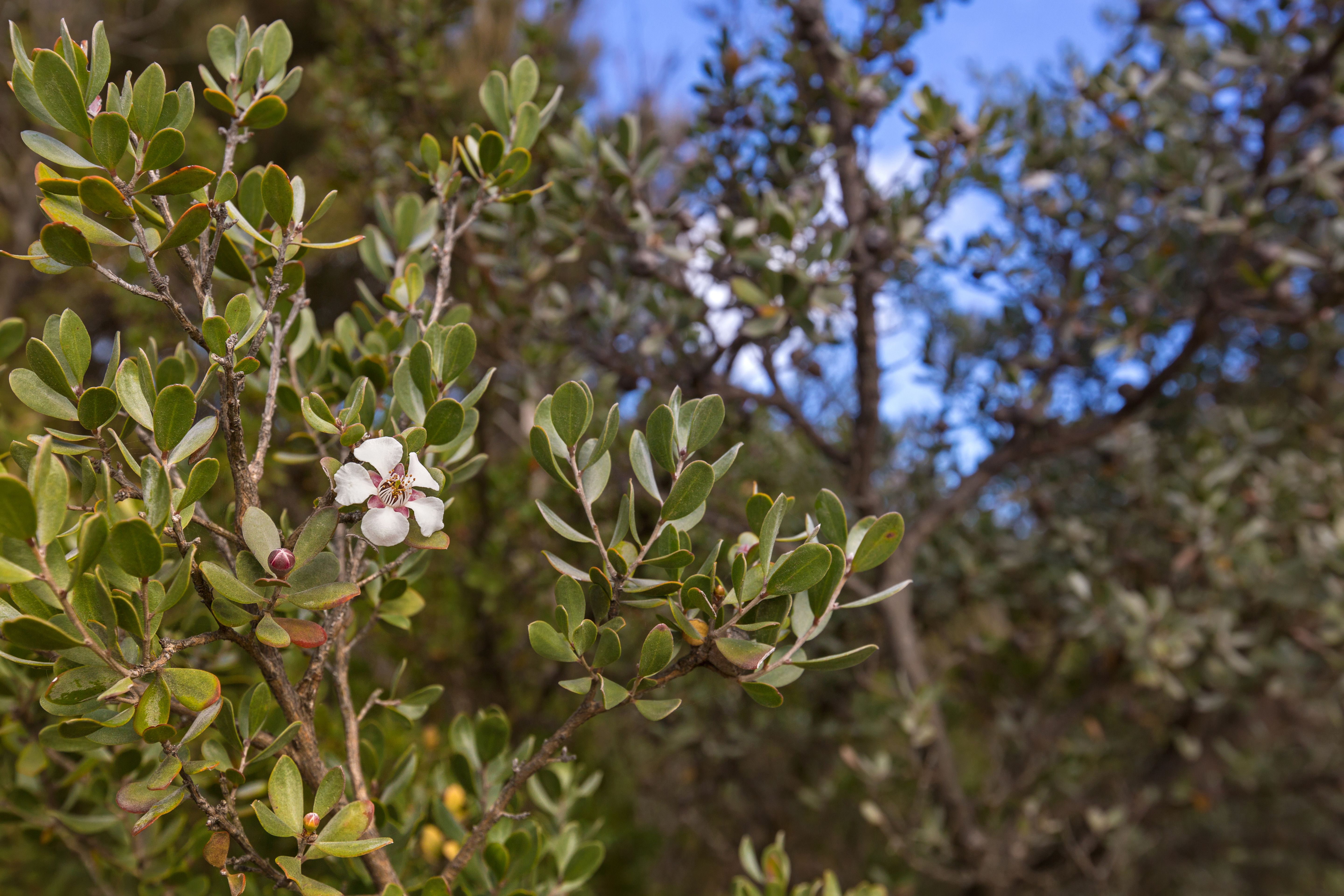Woolly teatree
(Leptospermum lanigerum)

Description
Leptospermum lanigerum, commonly known as the woolly teatree,is a small tree or medium shrub from the plant family Myrtaceae. Its common name derives from the conspicuously hairy capsules produced as fruit, along with the fine, silky hairs present on branches and leaves. L. lanigerum is widespread in many habitats, particularly in waterlogged areas such as moist, sandy coastal heaths, on river banks, riparian scrub, woodlands and on the fringe of montane grasslands. This species is endemic to Australia, with native populations occurring in New South Wales, South Australia, Tasmania and Victoria. Flowers possess the typical characteristics present within the genus Leptospermum; five free, white petals, many stamens and five small sepals; although the most distinctive feature is the persistent hairy capsules and the silvery appearance of mature foliage. L. lanigerum is common and widespread throughout Australia, occurring both as natural populations and cultivated varieties. This species has been used for many years by Indigenous Australians, and is a popular garden plant today. This small tree to medium-sized shrub is variable in size and shape and present in a number of different forms. Plants can grow as large, spreading or erect shrubs up to 3 metres (9.8 ft) high by 3 metres (9.8 ft) across, or very compact, columnar shrubs, up to 3 m high and 1 metre (3.3 ft) across. L. lanigerum also grows as a slender tree up to 18 metres (59 ft) tall in montane habitats in Tasmania. Leaves are usually alternately arranged along the stem, oblong in shape and with slightly rolled margins.Leaves vary in size from 4–20 millimetres (0.16–0.79 in), with new growth usually covered in small, soft, silky hairs. These hairs usually cause the foliage to appear silvery grey, however leaves can vary in colour from silvery grey to dark green, or occasionally possess a glossy upper surface. Like all species in the family Myrtaceae, L. lanigerum leaves are dotted with small oil containing glands, and when crushed emit a strong, characteristic aroma. These oil glands allow for easy identification, and detailed analysis of the oils has assisted in the classification and taxonomy of species within the genus Leptospermum.
Taxonomic tree:







